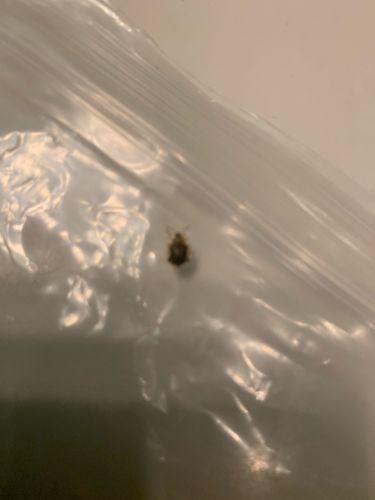Carpet beetle (likely Varied Carpet Beetle or Black Carpet Beetle)
Scientific Name: "Anthrenus verbasci" (Varied Carpet Beetle) or "Attagenus unicolor" (Black Carpet Beetle) - Difficult to determine specific species from image.
Order & Family: Coleoptera, Dermestidae
Size: 2-5 mm (0.08-0.2 inches)

Natural Habitat
Indoors, especially in areas with natural fibers like carpets, wool, furs, stored food products; outdoors in nests of birds and insects, and on flowers.
Diet & Feeding
Larvae of carpet beetles feed on a wide variety of animal products and natural fibers including wool, silk, fur, feathers, leather, dead insects, animal carcasses, and stored food products such as grains, cereals, and dried pet food. Adult beetles primarily feed on pollen and nectar from outdoor flowers.
Behavior Patterns
Larvae are typically found in dark, undisturbed areas. They are slow-moving and prefer to hide. Adult beetles are attracted to light and are often found near windows. They undergo complete metamorphosis (egg, larva, pupa, adult). The larval stage is the most damaging. They are known for 'grazing' on surfaces, leaving bare patches. They generally avoid direct sunlight.
Risks & Benefits
Potential risks include significant damage to household items made of natural fibers (carpets, clothing, upholstery, taxidermy), museum specimens, and stored pantry items, leading to economic losses. Their shed skins and fecal pellets can also be allergenic for some individuals. They do not bite or sting humans. Benefits are primarily ecological, where they act as decomposers in nature by breaking down organic matter.
Identified on: 9/16/2025